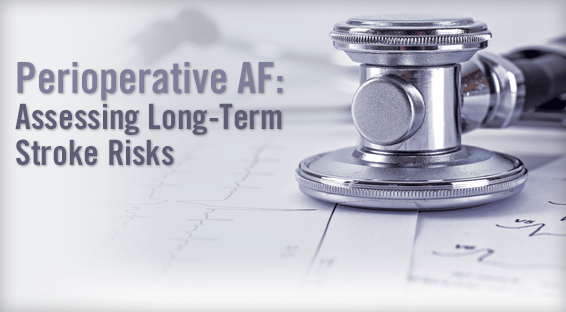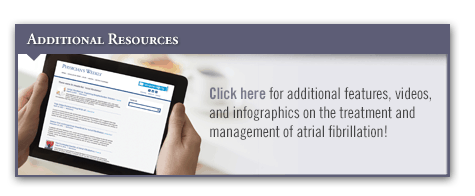Studies have shown that atrial fibrillation (AF) and flutter affect more than 33 million people throughout the world, and the presence of chronic AF has been associated with a three-fold greater risk of stroke. When stroke occurs in patients with AF, these individuals are at greater risk of longer hospital stays, worse disability, and higher mortality.
New-onset perioperative AF is one of the most common perioperative arrhythmias, but its incidence ranges widely because studies have included different populations in terms of the type of surgery performed and patient characteristics. “Although it’s well known that AF raises the risk of stroke in general, there is increasing interest to fully understand the clinical burden of perioperative AF,” says Hooman Kamel, MD. “It’s possible that even brief perioperative episodes of AF can increase the risk of stroke.”
Studies have shown a strong association between perioperative AF and length of stay, hospital costs, and mortality. Furthermore, the condition has been repeatedly associated with a higher short-term risk of perioperative stroke in the setting of cardiac surgery. However, data are scarce with regard to long-term stroke risks from perioperative AF in patients undergoing other types of surgery. Some research has suggested that perioperative AF may result as a transient response to the physiological stress of surgery itself. Overall, the long-term risks of stroke after patients experience perioperative AF are unclear.
Taking a Closer Look
Dr. Kamel and colleagues conducted a study to determine the long-term risk of ischemic stroke after perioperative AF of patients undergoing a variety of surgeries. Published in JAMA, the analysis used a population-based sample of more than 1.7 million patients undergoing surgery at acute care hospitals between 2007 and 2011, with an average follow-up of about 2 years. The authors defined perioperative AF as being newly diagnosed during the hospitalization for surgery.
“Most studies of perioperative AF and stroke have focused on the early risk of stroke after cardiac surgery,” explains Dr. Kamel. “Ours was different in that it focused on the long-term risk of stroke after the immediate perioperative period and because we looked at cardiac surgery as well as other operations.”
Higher Long-Term Risks
The investigators found that 1.43% of eligible patients involved in the analysis had new-onset perioperative AF during the index hospitalization, and 0.81% experienced a stroke after discharge. At 1 year after hospitalization for non-cardiac surgery, cumulative rates of stroke were 1.47% in those with perioperative AF and 0.36% in those without AF (Figure 1). At 1 year after cardiac surgery, cumulative rates of stroke were 0.99% in those with perioperative AF and 0.83% in those without AF (Figure 2).
“There was a significant association between perioperative AF and the long-term risk of ischemic stroke, even after controlling for potential confounders and censoring patients when they returned after surgery with an AF diagnosis,” Dr. Kamel says. The strength of this association was significantly greater for perioperative AF that occurred in the setting of non-cardiac surgery rather than cardiac surgery.
Significant Implications
Results of the study may have important implications for the care of perioperative patients. While many cases of perioperative AF after cardiac surgery may be an isolated response to the stress of surgery, perioperative AF after non-cardiac surgery may be similar to other etiologies of AF with regard to future thromboembolic risk. “Our results suggest that we need future studies to look at long-term ambulatory cardiac monitoring to better delineate the risks associated with transient versus persistent perioperative AF,” says Dr. Kamel.
Clinicians need to follow up with patients when perioperative AF occurs, regardless of the type of surgery, according to Dr. Kamel. “These patients need to be closely monitored for recurrent AF, especially in the short term after the surgery has been completed,” he says. “In addition, randomized clinical trials are needed to explore optimal strategies for antithrombotic therapy in patients with perioperative AF. It’s likely that these therapies will need to be personalized in order to effectively reduce risks of ischemic stroke in the future.”
Communicating With Patients
A diagnosis of perioperative AF should be made clear to patients and prominently documented at discharge, Dr. Kamel says. “This information must be communicated to patients so that they understand their need for continued follow-up after surgery. They should understand that they’re at higher risk for stroke even after they’re discharged from the hospital. Patient education is paramount to ensuring that they take the appropriate measures to reducing their stroke risks after surgery.”




 TimH
TimH